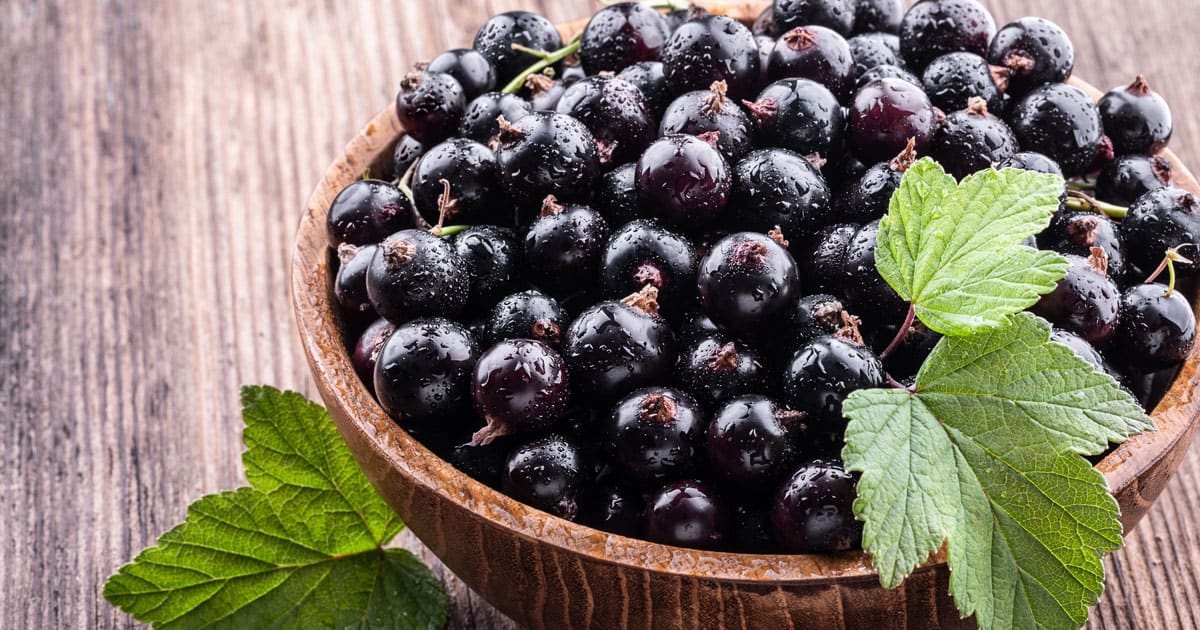
The North American continent is home to many nutritious berry plants. Strawberries, blueberries, and even blackberries are all cultivated in the United States. One of the most nutritious berries you can eat is rarely grown in the States, though, and that means many people are missing out on one of the tastiest, most nutritious foods nature has to offer us.
The black currant (ribes nigrum) is a berry grown throughout the world. Native to Europe, these berries can be found in North America and as far away as Asia and New Zealand. Black currant berries (sometimes just called “blackcurrant”) are amazingly high in vitamins and antioxidants. Like other dark-colored fruits and vegetables, these berries are rich in anthocyanins, a class of polyphenols known to have wide-ranging health benefits such as staving off the effects of dementia or offering anti-inflammatory support to reduce the effects of rheumatoid arthritis.
Plants, like people, have to play nice with each other. Sadly, the black currant doesn’t get along with white pine trees. Black currants are known to harbor a fungus responsible for white pine blister rust that can kill pine trees. As a result, currants were banned and even removed from large portions of the United States during the 20th century. While the nationwide ban was lifted in 1966, restrictions on its cultivation was lifted only in 2003.
Though sometimes called “the forbidden fruit” due to their role in carrying fungus dangerous to pines, black currants are also known as cassis berries. Many people may have consumed black currant without knowing it in alcoholic drinks containing crème de cassis.
Crème de cassis is a delicious component of many cocktails, and even ice cream can be flavored with this rich, sweet berry. Since few black currants are grown in the States, they are often candidates for inclusion in jams and jellies rather than being eaten fresh.
Due to their high levels of antioxidants, cassis berries have powerful effects in protecting your body against the oxidative stress of free radicals. These berries are high in levels of linoleic acid, but that is just the beginning of the list of powerful nutrients contained in these little dark berries. Other sought-after nutrients found in black currants include:
The flavonoids found in foods rich in anthocyanins, such as black currants, have been shown to improve everything from heart disease to eye health. Lowered risk of breast cancer, improved immune system function, and lowered risk of glaucoma are all known benefits of flavonoids, which make black currants a sought after food for many reasons.
Cardiovascular health is another area where the antioxidant properties of foods such as black currants or cranberries are well documented. Benefits from eating black currants include improvements in blood flow, lowered cholesterol, better management of blood clotting, lowered blood pressure, and even decreased risk of heart attacks.
The berries of the black currant plant are not the only parts of the plant sought out for their health benefits. Black currant leaves and black currant seed oil can also be found in supplements taken to help with a wide range of conditions. A chemical known as gamma-linolenic acid (GLA) is sought after for its anti-inflammatory benefits and its ability to boost the immune system.
These days, the outright ban on black currants has been lifted in much of the U.S., and many states are relaxing restrictions on these delicious berries as white pine consumption by the timber industry wanes. As the cultivation of black currant plants becomes legal again, there is growing interest in this delicious berry that has been largely missing from the American diet.
Though many American consumers may not immediately be familiar with or gravitate toward black currant as a flavor, there are many ways to use this berry in food production. This antioxidant-rich berry can be included in fruit juice blends to provide added health benefits and delicious, tempting flavor.
There are many different ways to get black currant into your diet. Beyond fresh black currant berries, jams, jellies, syrups, black currant extract, and black currant juice, are all popular throughout Northern Europe.
Since domestic production of black currants is only beginning to be re-established in the United States, fresh black currants are not as common as they are in Europe. This means that most Americans’ introduction to this delicious berry is going to come from some form of juice, jam, or jelly.
Blended with other, more recognizable fruits in juices or jams, black currant berries can add a little nutritional punch while helping your products stand out in a field of well-established flavors. This makes them excellent candidates for juice blends, seltzers, cocktail mixes, and even kombuchas.
Like the rest of our extensive product line at FruitSmart, our black currant juice concentrates are sourced from select, pre-approved providers that can guarantee the highest quality ingredients. Our black currant juice concentrate is also available in an organic variety.
If you are looking to add to your existing product line, or if it is time to enhance an existing offering with a novel and nutritional flavor, black currant might just be the answer. Contact FruitSmart today to learn how our extensive line of products can help transform your food and beverage offerings.
